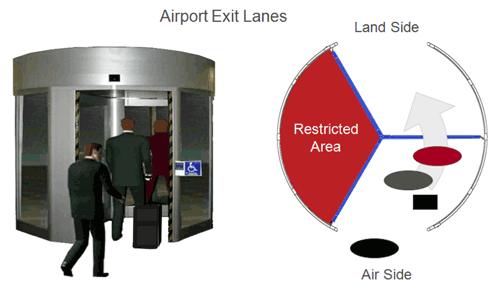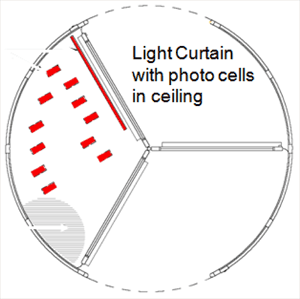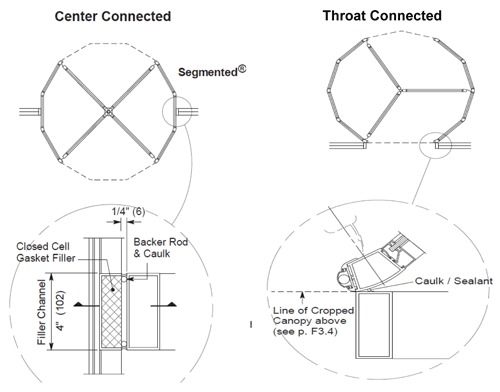Revolving Doors: A Greener, More Secure Environment
Airport Exit Lane Turnstiles
All airports have a secure and a non-secure side. Sometimes it is called airside and landside. The airport application is intended to keep the secure and non-secure sides separated. Entering airport security checkpoints has become routine for experienced travelers. Travelers are required to place their personal belongings on a conveyor belt for X-ray and pass through either X-ray or full body screen detection. After reaching a final destination, the traveler will exit through the secure area with either a manned station or airport revolving door. For the past 15-20 years, many airports have installed a physical barrier that takes travelers and airport employees from the secure area to the non-secure area. A one-way security revolving door has supplied the solution. Typically offered in a 3-wing design, this door allows travelers to leave the airport through a secure one-way only exit eliminating the need for a manned station allowing the guard to be deployed to make roving patrols.

- In the past 5-7 years airports have requested an additional level of security to prevent objects from being thrown/placed into the revolving door and “rotated” through to the secured side. Light curtains and volumetric sensor security prevent an object swept into the secure restricted area.

Typical Drum and Interface Connections
Revolving doors connect to the surrounding infrastructure in two possible ways:
- Center connected
- Throat connected
The selection is typically dictated by design. For example, an option to consider is whether it is desirable to have a portion of the revolving door on the building exterior. The fact that a revolving door is a free standing vestibule allows the unit to be located with flexibility. For example, locating the revolving as center-connected or even exterior to the building increases the lobby area. In the case when the door throat is connected, the revolving door stays inside the building. This design could reduce interference with pedestrian traffic using the sidewalks. Other applications have the door throat connected with the entire door being outside. This enhances merchandising space in a retail application or vestibule waiting space in a restaurant. For most applications the center-connected option is the norm.










